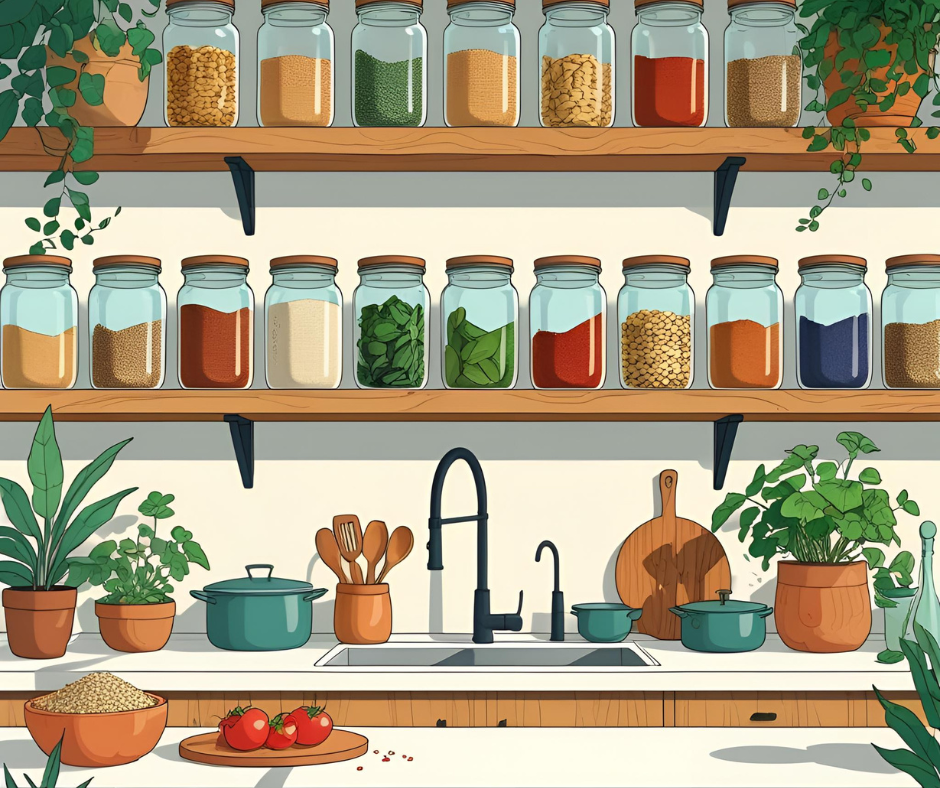Switching to healthier food in your kitchen is just one part of living a better lifestyle. Many kitchen items can be harmful due to the potential release of harmful toxins and chemicals, sometimes straight into our food. The scariest part is that you may not even be aware of them. It’s essential to recognize these potential health risks, as they can accumulate over time and have a significant impact on your health and your environment. Investing in safer options for you and your family is definitely worth it, and I hope this guide of 5 swaps for a healthier kitchen helps you get started.
Let me start by saying that I have made all of these swaps in my kitchen to some extent. Little by little, it all adds up – don’t think you have to make all of these changes today. You will overwhelm yourself. This article doesn’t even touch on things like dish detergent, bleached paper towels and more – we’ll get to that in another article, another time. Just change what you can, whenever it works for you. That right there is an improvement from using all of these products all of the time.
Nonstick Cookware
Most of us have owned and used nonstick cookware at some point in our culinary journey. The promise of easy-to-clean pans and the prevention of food sticking to the surface is appealing. However, when you consider the trade-off of potentially harmful chemicals being cooked into your food, it’s much easier to opt for traditional cookware and deal with the cleanup later. You see, the toxic elements is found in the coatings of these pans.
Per- and polyfluorinated compounds (PFAS) are a class of chemicals that have non-stick, stain-resistant, and waterproof properties, especially when heated. Anything related to the Teflon family will likely include these chemicals. Potential health risks include abnormal thyroid hormone levels, increased risk of certain cancers and even reduced immune response. If the non-stick coating starts to wear off or chip, tiny pieces can end up being ingested, potentially leading to health issues.
Great alternatives: Ceramic Cookware, Classic Stainless Steel, Cast Iron and Glass Bakeware
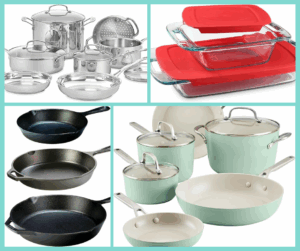
Cutting Boards
Plastic cutting boards, antibacterial cutting boards, and even composite wood cutting boards aren’t the best choices for your kitchen. Let’s take a closer look at what makes each of these a bit risky.
Plastic – Plastic cutting boards gained popularity in the 1950s, but concerns about their health effects are growing. A study in Environmental Science & Technology found that polyethylene and polypropylene cutting boards release microplastics when chopping food, which can stick to the food we chop while using these cutting boards and eventually, we consume these microscopic plastic pieces. It is estimated that the average person consumes approximately 250 grams of microplastics per year. This is the equivalent of a heaped dinner plate full of shredded plastics. As of right now, there are no known ways to detox from these microplastics, but we do know they can cause some significant health issues. Some plastic boards may contain harmful chemicals, such as BPA or phthalates, which can also leach into our food. Not to mention, bacterial growth from grooves created by knives over time that trap food particles and moisture, which could lead to bacterial growth.
Acrylic – Acrylic is a type of plastic called polymethyl methacrylate, or PMMA. This means microplastics are still able to make their way into our food while we use them. Acrylic also releases harmful chemicals when it’s heated
Composite Wood – Composite wood cutting boards can be damaging to knives, causing them to dull more quickly than other materials. Some composite boards may contain formaldehyde, a known carcinogen, which can leach into food being prepared on them.
Great alternatives: Glass cutting boards are a great option, especially when cutting or butchering meat products. It is easy to disinfect and heat-resistant. It is worth noting that glass cutting boards will dull knives more quickly than other materials.
Acacia Wood Cutting Boards are a great choice due to their durability, water-resistant and knife-friendly surfaces. Not to mention, they are absolutely beautiful. This type of material requires regular oiling to prevent it from drying out or cracking.
Bamboo Cutting Boards are incredibly durable and less porous than other woods, making them less prone to harboring bacteria from trapped moisture. Bamboo boards also require regular oiling. Caraway offers a helpful article on how to properly oil wooden cutting boards and utensils.
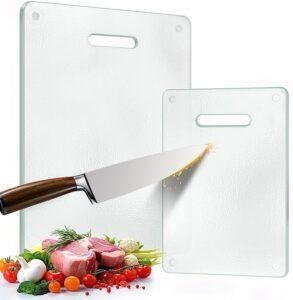
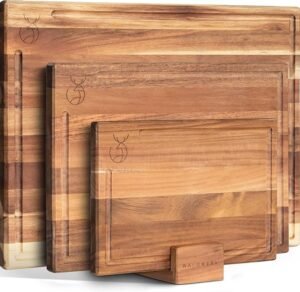
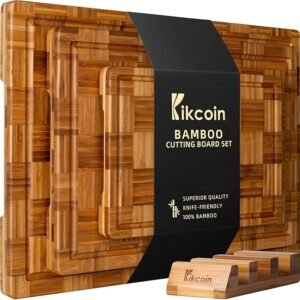
Painted Glassware
You might think all glassware is safe, but think again. Glass objects that have been decorated or painted can be toxic due to the presence of lead and cadmium. This is especially true for all of that lovely vintage glassware you’ve been finding at the thrift shop. Both lead and cadmium are metals and can leach out from the painted glassware into the drinks or food you consume when using them. Over time, these metal exposures can lead to neurological problems, cognitive impairments, and anemia, among other health issues.
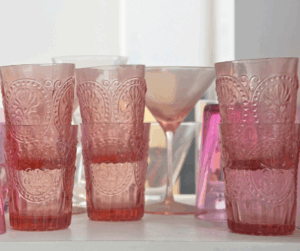
Great alternatives: Etched glasses, Engraved glasses and Embossed glasses all bring a beautiful aesthetic to drinkware.
Food Storage Containers
Many of us store leftovers in containers for future meals. Two years ago, I switched from plastic to glass containers after learning about the dangers of plastic food storage. Plastic containers often contain Bisphenol A (BPA), a substance that is harmful to both children and adults. Particularly concerning are single-use containers, like butter tubs and takeout boxes, which may contain BPA.
Don’t let that pesky “BPA-free” label fool you. Even “BPA-free” containers can have BPS or BPF. Both are known to mimic or interfere with the body’s natural hormones, particularly estrogen. They are also linked to various health issues, including certain cancers, cognitive problems and reproductive disorders.
Great alternative: Glass food storage containers with glass and silicone lids
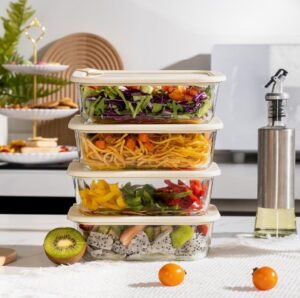
Cooking Oils
Some cooking oils can become toxic when heated to high temperatures, forming harmful compounds such as aldehydes and trans fats. Additionally, some oils contain contaminants from the refining process or even the original source. Repeated heating can exacerbate these issues. The worst offenders are seed oils. These include: canola, soybean, corn, grapeseed, cottonseed, sunflower and grapeseed. These oils often undergo extensive refining, including heating, bleaching, and deodorizing, which can create harmful byproducts. They are also more commonly produced from genetically modified (GMO) crops.
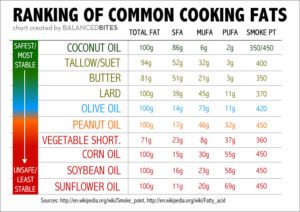
There are several excellent alternatives to seed oils. Our ancestors used coconut oil, ghee, tallow, and olive oil for thousands of years without fail. If you’re interested in exploring the topic further, The Little Shine has an informative article on healthy cooking oils, discussing when and why to use each type of oil.
Here are my recommendations for healthier oils – you will find each one of these in my kitchen:
There are many other changes you can make in your kitchen to start living a healthier life, but here are five to get you started. What have you changed in your kitchen for a healthier lifestyle? Please share with me in the comments below!

